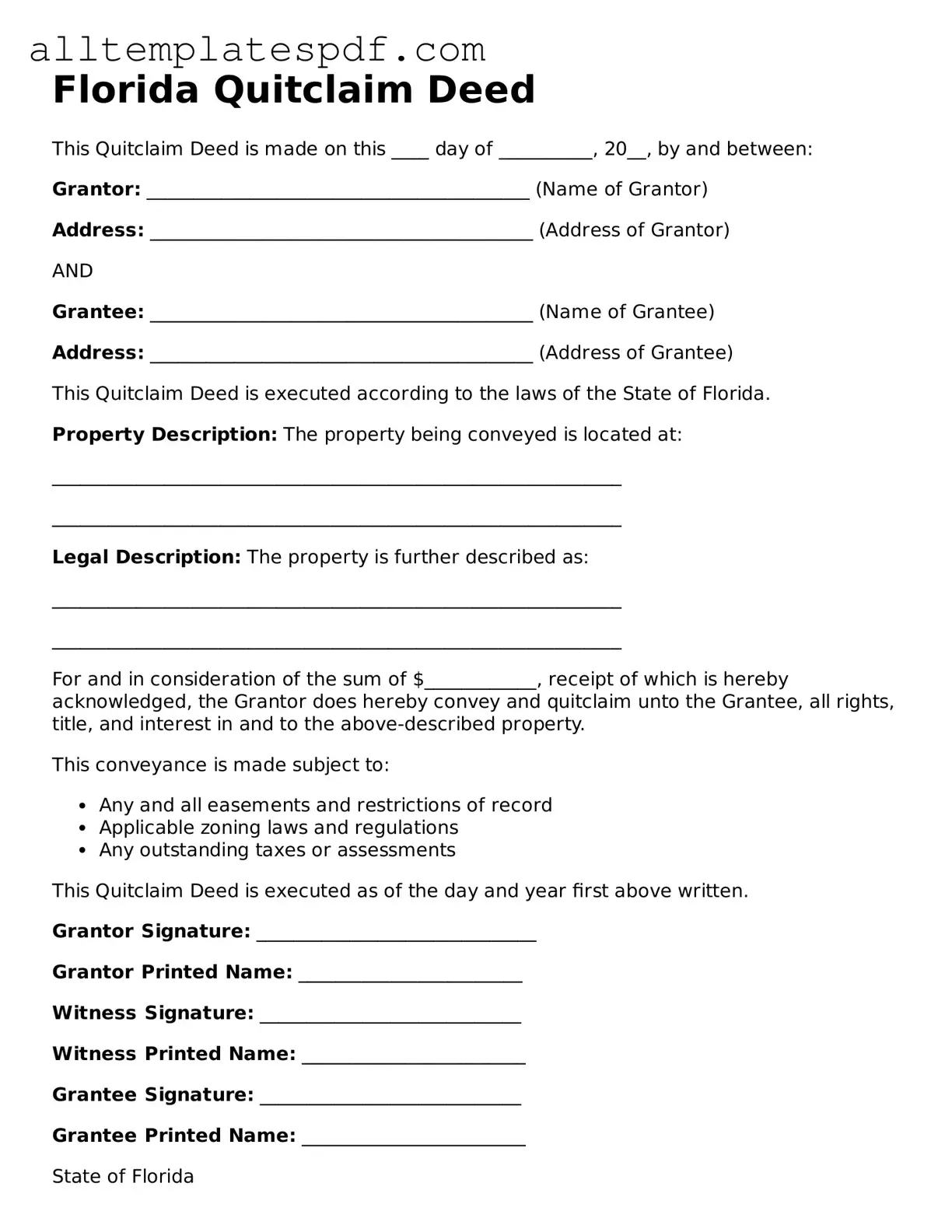When filling out a Florida Quitclaim Deed form, it’s easy to make mistakes that can lead to complications down the road. One common error is failing to provide accurate names for all parties involved. It’s crucial that the names of both the grantor (the person transferring the property) and the grantee (the person receiving the property) are spelled correctly and match their legal documents. Any discrepancies can create confusion and may even invalidate the deed.
Another frequent mistake is neglecting to include a proper legal description of the property. This description should be precise and detailed, often found in the property’s original deed. Relying on vague descriptions can result in issues regarding ownership and boundaries. Always ensure that the legal description is complete and accurately reflects the property being transferred.
Many people also overlook the need for notarization. In Florida, a Quitclaim Deed must be signed in the presence of a notary public. Failing to have the document notarized can render it unenforceable. It’s essential to ensure that all signatures are witnessed and notarized correctly to prevent any legal challenges later on.
Additionally, individuals sometimes forget to record the Quitclaim Deed with the county clerk’s office after it has been completed. Recording the deed is a critical step that protects the new owner’s rights and provides public notice of the property transfer. Skipping this step can lead to disputes over ownership, especially if the property is sold again in the future.
Another mistake involves not considering potential tax implications. While Quitclaim Deeds are often used to transfer property without monetary exchange, there may still be tax consequences. It’s wise to consult with a tax professional to understand any potential liabilities or benefits that may arise from the transfer.
Finally, many individuals fail to seek legal advice before completing the form. While it may seem straightforward, the nuances of property law can be complex. Consulting with a legal expert can help identify any potential pitfalls and ensure that the transfer is executed smoothly and legally. Taking the time to review the process can save a great deal of trouble in the future.
